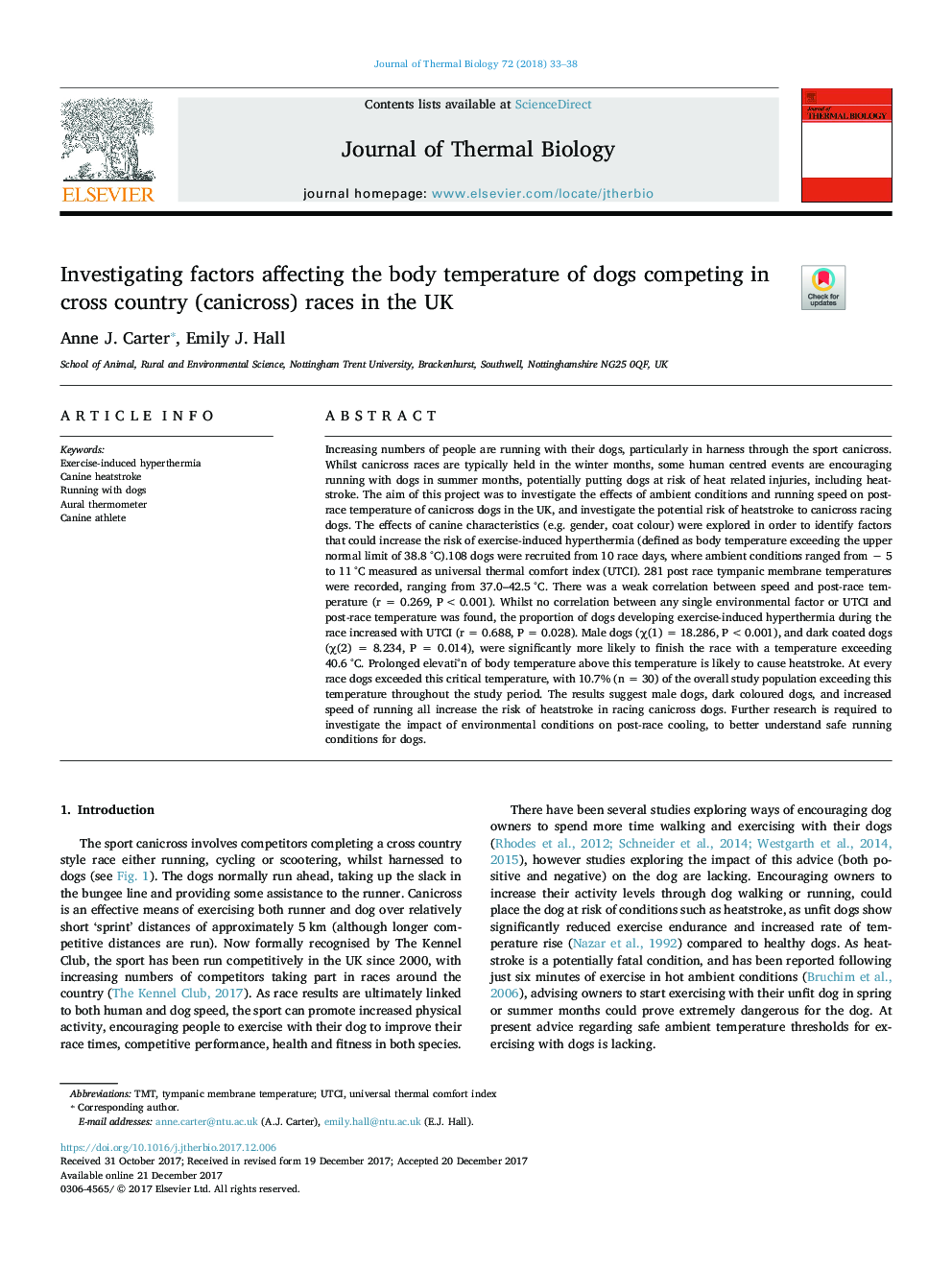| کد مقاله | کد نشریه | سال انتشار | مقاله انگلیسی | نسخه تمام متن |
|---|---|---|---|---|
| 8650091 | 1571075 | 2018 | 6 صفحه PDF | دانلود رایگان |
عنوان انگلیسی مقاله ISI
Investigating factors affecting the body temperature of dogs competing in cross country (canicross) races in the UK
ترجمه فارسی عنوان
بررسی عوامل موثر بر دمای بدن سگ های رقابت در مسابقات کراس (کانی کراس) در انگلستان
دانلود مقاله + سفارش ترجمه
دانلود مقاله ISI انگلیسی
رایگان برای ایرانیان
کلمات کلیدی
موضوعات مرتبط
علوم زیستی و بیوفناوری
علوم کشاورزی و بیولوژیک
علوم کشاورزی و بیولوژیک (عمومی)
چکیده انگلیسی
Increasing numbers of people are running with their dogs, particularly in harness through the sport canicross. Whilst canicross races are typically held in the winter months, some human centred events are encouraging running with dogs in summer months, potentially putting dogs at risk of heat related injuries, including heatstroke. The aim of this project was to investigate the effects of ambient conditions and running speed on post-race temperature of canicross dogs in the UK, and investigate the potential risk of heatstroke to canicross racing dogs. The effects of canine characteristics (e.g. gender, coat colour) were explored in order to identify factors that could increase the risk of exercise-induced hyperthermia (defined as body temperature exceeding the upper normal limit of 38.8 °C).108 dogs were recruited from 10 race days, where ambient conditions ranged from â 5 to 11 °C measured as universal thermal comfort index (UTCI). 281 post race tympanic membrane temperatures were recorded, ranging from 37.0-42.5 °C. There was a weak correlation between speed and post-race temperature (r = 0.269, P < 0.001). Whilst no correlation between any single environmental factor or UTCI and post-race temperature was found, the proportion of dogs developing exercise-induced hyperthermia during the race increased with UTCI (r = 0.688, P = 0.028). Male dogs (Ï(1) = 18.286, P < 0.001), and dark coated dogs (Ï(2) = 8.234, P = 0.014), were significantly more likely to finish the race with a temperature exceeding 40.6 °C. Prolonged elevati°n of body temperature above this temperature is likely to cause heatstroke. At every race dogs exceeded this critical temperature, with 10.7% (n = 30) of the overall study population exceeding this temperature throughout the study period. The results suggest male dogs, dark coloured dogs, and increased speed of running all increase the risk of heatstroke in racing canicross dogs. Further research is required to investigate the impact of environmental conditions on post-race cooling, to better understand safe running conditions for dogs.
ناشر
Database: Elsevier - ScienceDirect (ساینس دایرکت)
Journal: Journal of Thermal Biology - Volume 72, February 2018, Pages 33-38
Journal: Journal of Thermal Biology - Volume 72, February 2018, Pages 33-38
نویسندگان
Anne J. Carter, Emily J. Hall,
